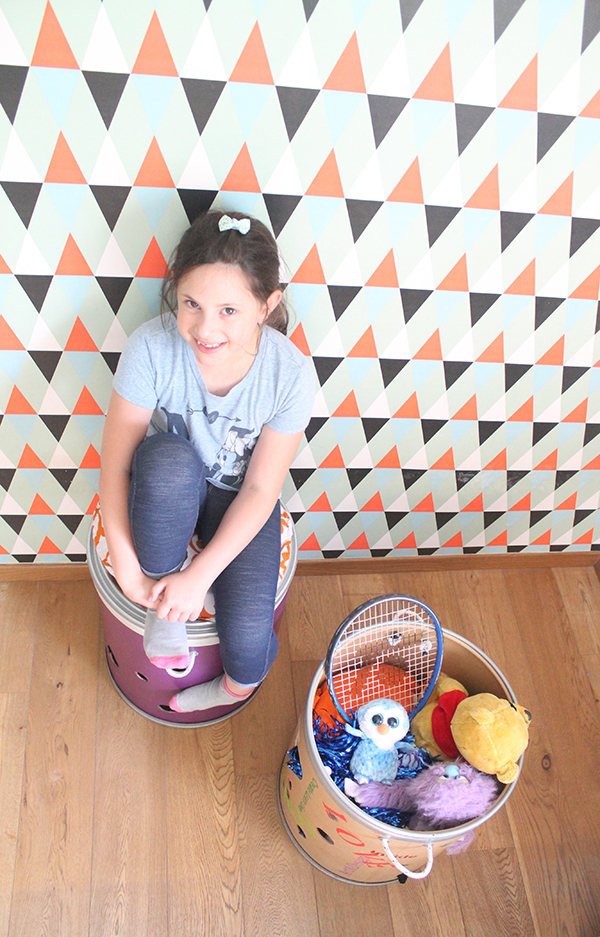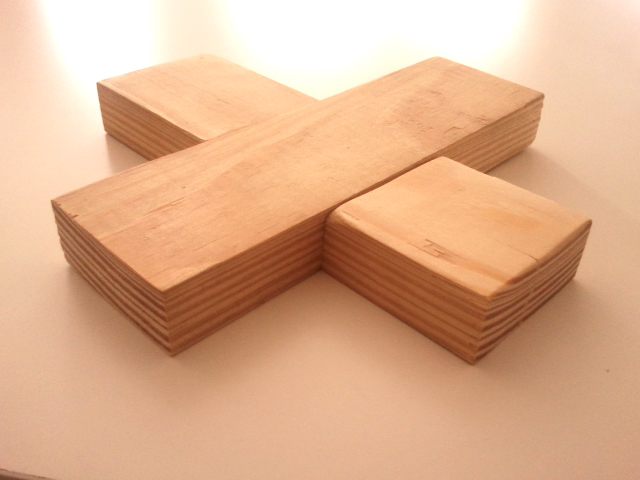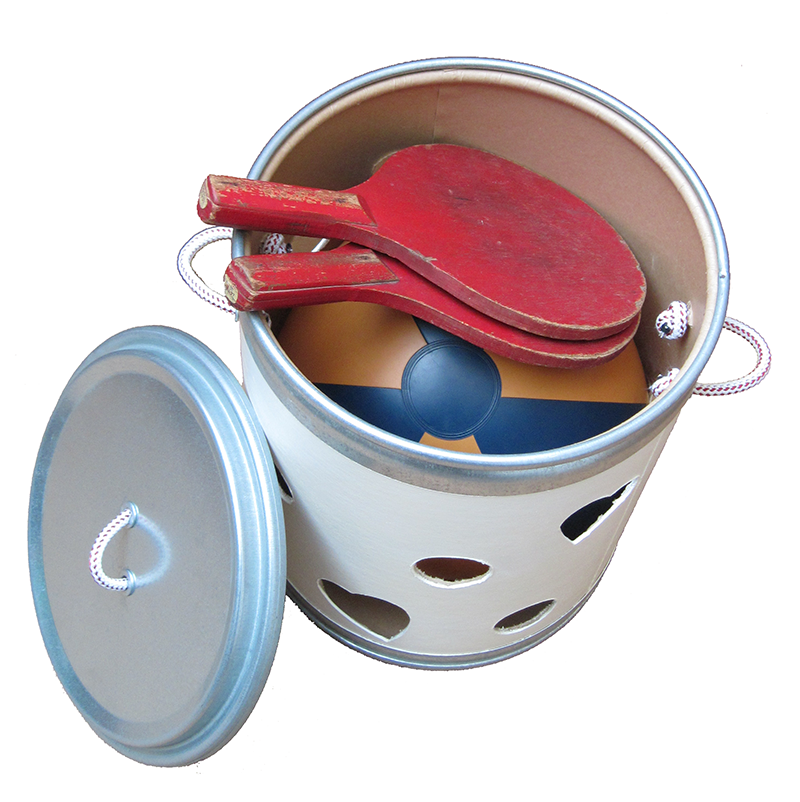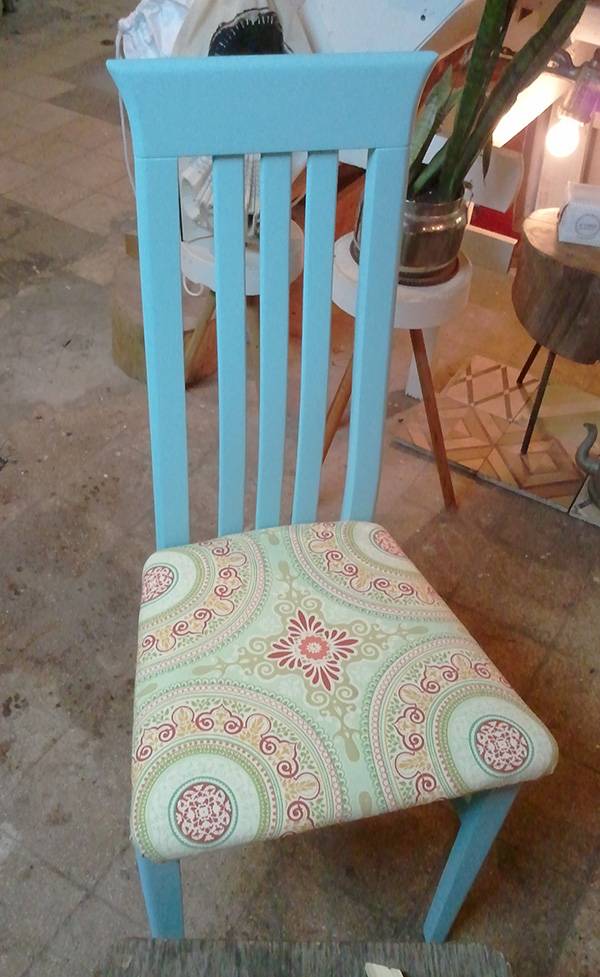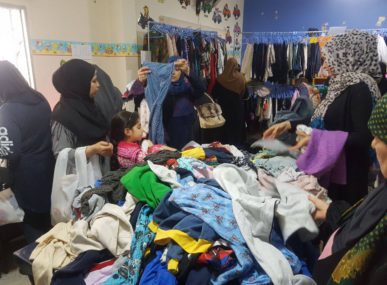Tager is the Israel-based industrial designer behind AyaKaya, a business that creates functional and upcycled products from waste — and through its workshops, encourages others to do the same.
, Israel
Resource Efficiency and Sustainable Waste Management, Sustainable Furniture
For Aya Tager, there is magic in the moment when people realize something is starting to take shape. She is talking about the hands-on sustainable design workshops she runs, where participants take a material they perceive as useless — packaging cardboard, plastic water bottles, or old furniture, for example — and turn it into something which again has use, value, and personality.
It was in Amsterdam, not Israel, where Tager first learned about the concept of sustainability. Returning to Israel in 1994, Tager enrolled in the industrial design program at the Holon Institute of Technology, and signed up for every possible course on sustainability.
As part of that program, she remembers visiting factories on a kibbutz. On one trip, the students observed a production line creating drums to transport hazardous waste. Their assignment was to design and create a product from a drum. An idea was sparked, and Tager soon found herself purchasing the barrels that had been rejected because of various manufacturing issues.
With an AyaKaya touch, those drums were transformed into colorful laundry hampers, toy storage containers, and stools. The first of those designs was made in 1996, and Tager still uses it in her home today — a timeless creation made from something originally perceived as trash. Tager knew she was onto something.
Workshops change public perception about waste:
This is what AyaKaya is about: bringing people together to create beautiful upcycled and handmade products.
Take cardboard, a material that fascinates Tager, and tickles her design skills. The usual word association is one of cardboard and packaging waste, but AyaKaya’s hands-on workshops demand people think differently. Participants are asked to collect and bring their own materials: sheets of double corrugated cardboard like the ones used in shipping boxes. Then, to change their perception, they turn that trash into treasure.
“When I tell participants that at the end of the workshop they will leave with a stool that I can stand on, they look at me and say ‘okay, we’re not so sure,’” she laughs. “They’re skeptical, but when they see that the final product can support me and it’s also lightweight, that’s a mind-blowing thing.”
What is created in AyaKaya’s workshops is not dictated by Tager alone. It is not only the creation Tager is interested in, but the renewal as well. Take an old chair that has been passed down in the family, but has been deemed unusable for whatever reason. Within a three-session workshop, Tager will help upcycle it.
“We start by discussing where you intend to use this furniture, what type of personality you want to give it, and materials to use. I am a huge advocate for colors and water-based paints that have fewer pollutants and cause you to breathe in fewer chemicals,” Tager explains. By reviving old furniture, AyaKaya saves it from landfill, and empowers workshop participants to create something with their two hands.
“It’s unique and there is nothing like it anywhere else in the world,” Tager says of the excitement of creating something new. “You can proudly present it to other people and say ‘I made that.’”
Tager has also designed the concept and prototypes for mass-produced items, including the concept for sustainable picnic sets as well as pot holders made from natural wood off-cuts. She is currently searching for manufacturers and companies who may wish to develop these ideas further.
While other commitments keep Tager busy, she most commonly offers her workshops with kindergarten children or a combination of kids and parents. She was also recently asked to propose a 10-session sustainability and design course for adults, which she may be offering in the coming years.
Not just about green, but also good design:
When it comes to sustainable design taking root among consumers, Tager and other designers say that marketing a product as environmentally friendly is not — and should not — be enough to make people buy it.
“We have to invite people to make the right choices through good design, and offer solutions that are attractive and are answering needs and wishes,” says Adital Ela, an Israeli sustainability designer and Founder of Criaterra Earth Technologies. “It’s about offering a mainstream solution that is a practical, good, and inspiring choice, and that also has the benefit of being sustainable.”
Ela says the market is entering a new stage of understanding when it comes to sustainability, and that the shift is moving away from individual products to initiatives that change entire systems. “Sustainability is about large-scale visions that can change the system from within, and upcycling can definitely participate in that,” Ela says. She thinks Israel is ready for the shift — as a sustainable design lecturer at the Holon Institute of Technology, where both she and Tager are alumni, Ela instructs future designers as part of the school’s social and environmental design study track.
Perhaps more students learning about sustainable design will help overcome one of the biggest barriers Tager still faces in Israel: people who fear that living sustainably means pressing the rewind button on progress.
“People will say ‘oh you green people, you want us to go back to washing by hand.’ Absolutely not — to each situation, it is about incorporating different aspects, and that’s where design comes in,” Tager says. “It is about creating a better way to do things, and showing people that what’s better for the environment can also be better for them financially.”
It is for this reason that design and usability are central in AyaKaya’s values — in addition to the
importance of creating a “green” product. Tager hopes good design will help AyaKaya overcome another challenge: convincing people to pay for handmade products created from cardboard or other “low-value” materials.
“We’ve become accustomed to shopping in a certain way,” Tager says. “If it’s not available on the shelf, people don’t think about it, and I don’t blame them. It’s not their job to think of these products — it’s mine.”
By creating interesting, functional, and upcycled housewares — and running workshops so people can see the amount of work that goes into creating them — Tager is part of a growing group in Israel that is putting green and good design hand-in-hand.
Find out more about Aya Tager and AyaKaya on her website and Facebook page.
Photos: Courtesy of AyaKaya.

